|
 |
|
 About us About us |
"WA Project TAISHI" is a non-profit, voluntary group dedicated to promoting world peace by introducing Japanese calligraphy and traditional culture both within Japan and around the world.
We are not a legally registered organization and have no formal institutional status. We have no official titles, no pursuit of professional status, and no ambition for personal advancement. We are simply individuals who sincerely wish for peace.
We have chosen not to register formally because we want to operate more freely, without being bound by legal constraints, and to cherish human connections and shared intentions.
We do not seek recognition or fame, nor do we need titles or status.
In essence, we are a collective of ordinary people—like water and air that exist throughout nature. WA Project TAISHI is the gathering of such peaceful energy shared by people who wish for harmony in the world.
WA Project TAISHI is not affiliated with any religious or political organization.
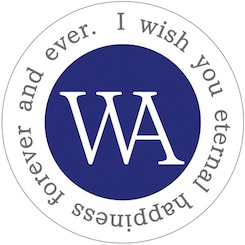
|
|
| TOP |
 Aspiration Aspiration |
The September 11 attacks in New York shocked the entire world. It is said
that the world changed completely after that day, as waves of terrorism
spread across the globe in its aftermath.
In response, the aim of this project is to deliver a message of love and
peace on the same day, in various locations, as a counter to terrorist
acts born of hatred and anger.
The intense forces of hatred and anger can have a devastating impact on society.
Love, by contrast, spreads slowly—but surely—and has the power to embrace and dissolve hatred and anger.
We witnessed how hatred and anger changed the world on that day. But we
also believe in the possibility of changing the world through the power
of love.
That is why, since 2017, I have organized voluntary peace-themed calligraphy events at temples and shrines both in Japan and abroad on every anniversary of that tragic day.
The British author Edward Bulwer-Lytton once said, “The pen is mightier than the sword.”
Indeed, words and expression can shape the world more peacefully and powerfully
than weapons ever could.
Inspired by this belief, we have carried out our peace activities in collaboration with calligraphers and artists rooted in traditional Japanese culture.
Tatsuhiko MIYAMOTO
WA Project TAISHI
|
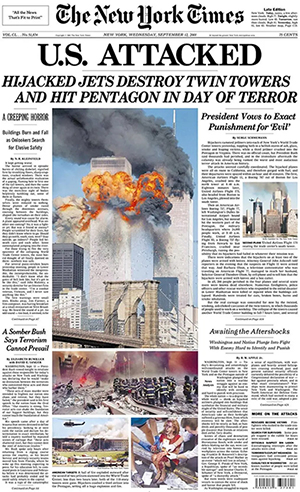 |
|
| TOP |
 What is KIGO? What is KIGO? |
Sekijyo-KIGO, commonly known as a “calligraphy performance,” is a form of traditional Japanese spiritual culture in which a calligrapher creates art in front of an audience.
In this practice, the calligrapher expresses a heartfelt word, phrase, or wish on a large sheet of paper. As they write, the audience’s attention is drawn to the graceful movements of the calligrapher and the brush’s tip. Much like a conductor leading an orchestra, the calligrapher unites the emotions of those present, deepening the collective sense of prayer and intention.
This powerful moment invites participants to reflect on world peace, global harmony, and spiritual tolerance.
Dressed in traditional kimono, the calligrapher inscribes a message of peace and the spirit of Wa—the Japanese ideal of harmony.
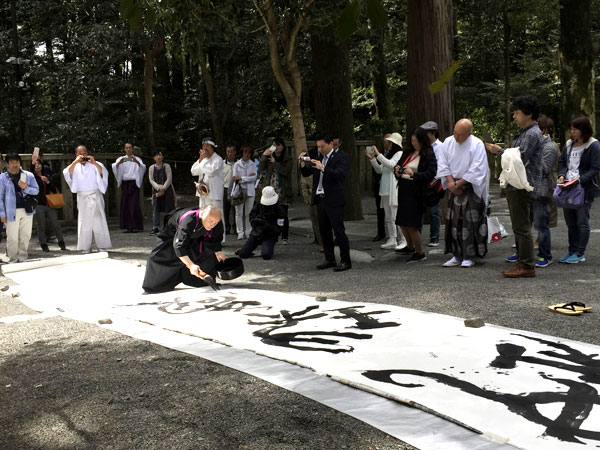
|
|
| TOP |
 Philosophy Philosophy |
Japan is known today as a country with one of the world’s deepest and most well-documented traditions of respect for nature.
Yet like many nations, our history has been marked by strife—civil wars, political unrest, and repeated natural disasters that brought great suffering to our people.
Even in recent times, we have endured devastating earthquakes, typhoons,
and other natural calamities. A world-famous example is the tsunami that
struck Japan in 2011, leaving behind tremendous damage and deep sorrow.
From these painful experiences, we have learned countless lessons from
the laws of nature.
One of the most important is the concept of “Wa Spirit”—a spirit of harmony, born from resilience. This idea is rooted in the first article of the Seventeen-Article Constitution written by Prince Shōtoku over 1,400 years ago to guide the moral foundation of governance.
To help people around the world understand this ancient yet timeless ideal, we explain Wa Spirit through four English words:
Circulation, Harmony, Tolerance, and Forgiveness.
These values are not abstract theories. They have been lived and deeply rooted in the Japanese psyche for generations. It is thanks to Wa Spirit that Japan has been able to recover from war, disaster, and loss without being consumed by hatred—and has found the strength to rebuild and prosper.
In the natural world, everything circulates.
The moon orbits the earth, the earth orbits the sun. On a microscopic level, electrons revolve around atomic nuclei.
Water evaporates, forms clouds, returns as rain, flows into rivers and seas, and then evaporates again.
Herbivores eat plants, carnivores eat herbivores. The food chain is another form of circulation.
Through this endless cycle, nature and the universe maintain balance and harmony.
Emotions, too, circulate according to this natural law.
When we express hatred and anger, those feelings eventually return to us.
So forgiveness is not for the benefit of others—it is for your own peace of mind.
As the saying goes, "What goes around, comes around." If we leave hatred and anger unaddressed, their cycle becomes endless, feeding a vicious circle of pain and resentment.
The only way to break this cycle is not with more hatred, but with Yurushi—the Japanese concept of tolerance and forgiveness.
Yurushi frees our hearts and minds from negativity.
And just as hatred returns to us, so too does love. When we express love, it will find its way back.
Again: Forgiveness is not for others—it is for your own happiness.
What matters is not seeking quick results, but trusting in the greater rhythm of the universe.
Sometimes, change happens instantly; other times, it unfolds slowly over time.
But if it is true, our hearts will align with this wise and eternal law.
Consider this:
Despite suffering the devastation of two atomic bombings and total defeat in war, how did Japan rise—within just 20 years—to become one of the world’s leading economies, inventing the world’s fastest bullet train and hosting the first Olympic Games in Asia?
There may be many reasons, but I believe one key lies in Yurushi.
It is this spirit that enabled Japan to recover in a way rarely seen in human history.
In Japan, the act of purifying anger, hatred, and inner stress is called Misogi—a spiritual cleansing and rebirth.
But this concept is not unique to Japan.
In India, people bathe in the Ganges River. In many religions, water is considered sacred, used to purify both body and spirit.
At its core, these practices share the same essence—Yurushi.
The ultimate purpose of all religions is the happiness of humanity. And happiness begins with mutual Yurushi.
Yurushi creates circulation—an ongoing reset—that leads to peace of mind and true prosperity.
Japan, with its long history, has repeatedly risen from the ashes of war and disaster.
This resilience—the refusal to fall into cycles of revenge and victimhood—is proof of the power of Misogi.
It is this strength, this deep cultural wisdom, that I hope to share with the world.
|
|
| TOP |
 In Japan In Japan |
Every April and September, we host KIGO (calligraphy) ceremonies at Shinto shrines and Buddhist temples across Japan, as well as at the Peace Parks in Hiroshima and Nagasaki. During these events, calligraphers and high school calligraphy clubs express heartfelt messages of peace through their brushwork.
Since 2021, we have also welcomed ambassadors from around the world to a shrine and a temple in Tokyo each year, inviting them to inscribe their own messages of peace.
Between 2021 and April 2025, a total of 31 embassies have participated in this initiative.
Participating Countries:
Afghanistan, Angola, Israel, Iraq, Iran, Ukraine, Estonia, Guinea, Kosovo, Colombia, Congo (DRC), San Marino, Sudan, Spain, Tanzania, Germany, Togo, Dominican Republic, Nepal, Panama, Palau, Burkina Faso, Venezuela, Malawi, Myanmar, South Africa, South Sudan, North Macedonia, Liberia, Romania, Lebanon |
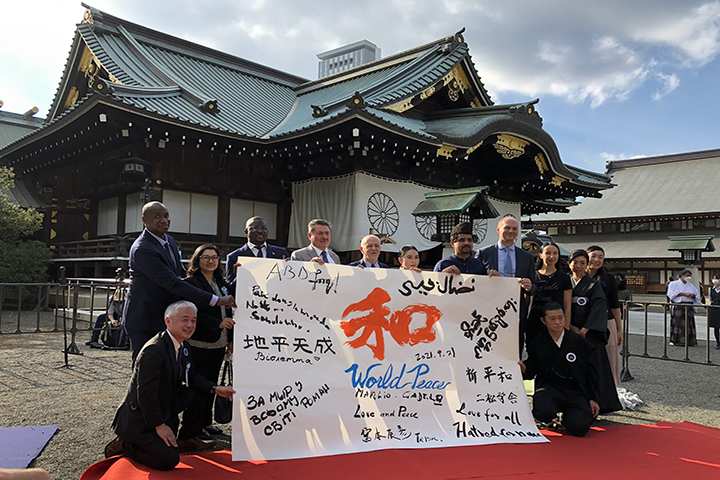
Ambassadors |
|

Hiroshima
|
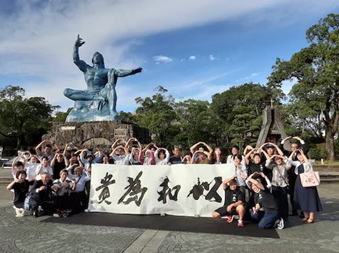
Nagasaki
|
|
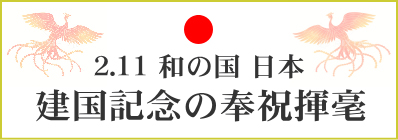
National Foundation Day |
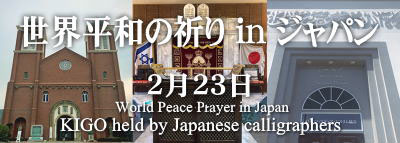
The Emperor's Birthday |
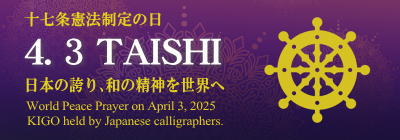
Day of WA Spirit |
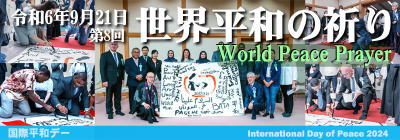
International Day of Peace |
|
|
Fusion of Japanese Shinto shrine and Christianity
Celebrating the birth of Jesus Christ, on December 25th Christmas, 2017,
KIGO was held by 8 Japanese calligraphers. They wrote the character “愛
” which means “LOVE” in Japanese in different fonts. We prayed for the
world to be full of love, at a venerable shrine established 1,300 years
ago in ancient Nara. |
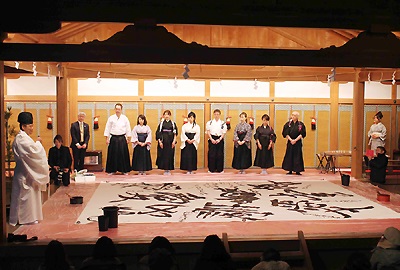
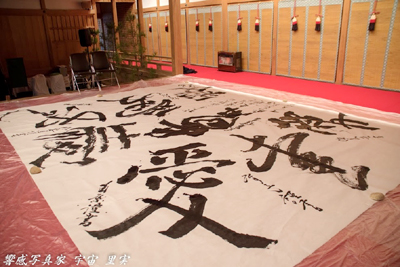 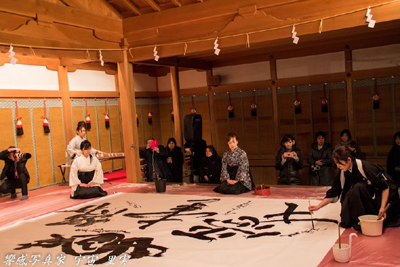 |
|
| TOP |
 Outside of Japan Outside of Japan |
To share messages of peace not only in Japan but also around the world, we have held KIGO ceremonies internationally. So far, we have organized events in Bosnia and Herzegovina and France.
Given the opportunity, we hope to continue delivering messages of peace across the globe through the art of Japanese calligraphy. |
| |
| In Bosnia and Herzegovina |
| Stari Most on November 9th, 2018 |
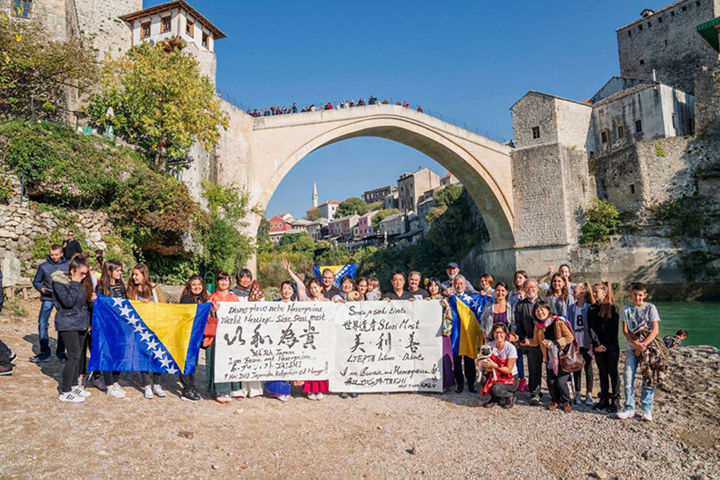
|
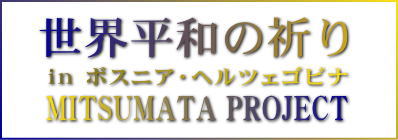
| In France |
Grande Mosque de Paris on August 15th, 2018
|
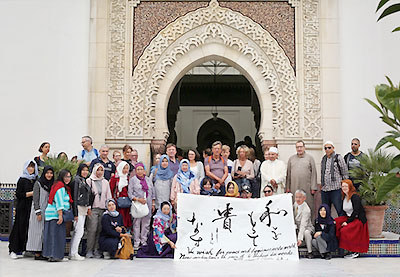 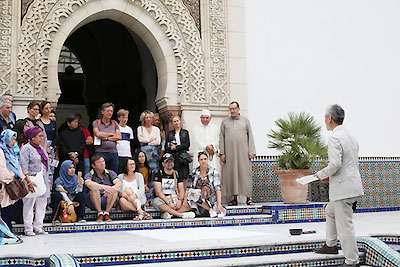
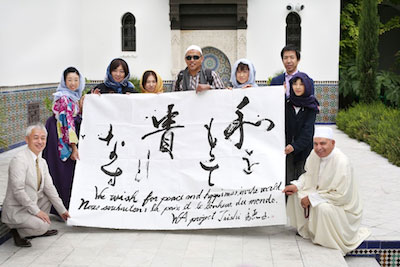 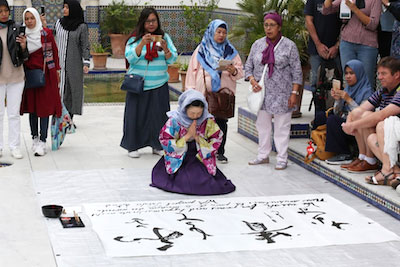
|
| MAISON DU JAPON Cite InternationaleUniversitaire de Paris on August 14th, 2018 |
 |
| Our events were licensed as an official event of Japonismes 2018. |
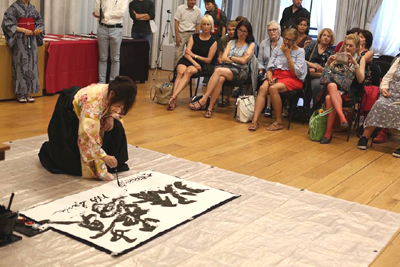  |
World Peace Prayer in Paris on August 24-27, 2019
Grand Synagogue de Paris, Église Saint-Sulpice, Église Saint-Louis-en-l'Île, Grande Mosquée de Paris
|
Event Report: “World Peace Prayer in Paris, 2019”
|
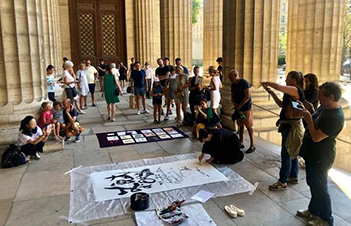 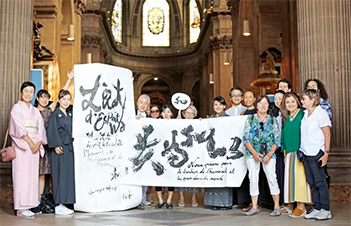 |
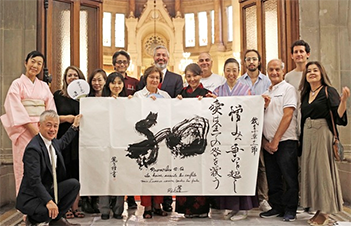 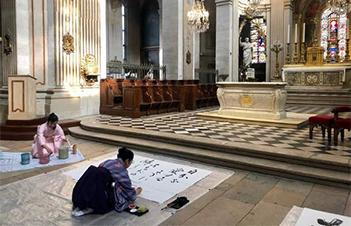 |
|
|
|
|
| TOP |
| |
| |
| “WA Project TAISHI” Office ♯305 Guesthouse Rainbow Fushimi, 1-25-14
Sakae, Naka-ku, Nagoya-shi, Aichi 460-0008, JAPAN |
| © WA Project TAISHI. All Rights Reserved. |


























